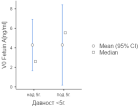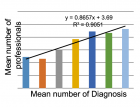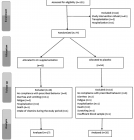Abstract
Research Article
Economic disparities and suicides: The dynamic panel data analyses of 50 states in the United States
Bruce Q Swan*
Published: 16 March, 2021 | Volume 5 - Issue 1 | Pages: 020-029
The economic inequalities associated with suicide risks among 50 states in the United States were identified in this paper to form the dynamic panel data set from 1981 to 2016. The effects of growing income inequalities on suicides in the Unites States were estimated using the Arellano–Bond method. This paper is the first to associate the social inequalities with suicides using the state-level dynamic panel data in America. It is found that the change of unemployment rates significantly and positively impact the changes of the overall suicides rates, female and male suicides rates. The changes of Top 10% income index are uniformly positive to the change of female, male and overall state-level suicide rates. The Gini index has positive correspondence within the overall and female groups, along with the insignificantly vague evidence within the male groups. The potential endogeneity problem inferring from the fixed effect estimation has been also investigated accordingly.
JEL Classification: A13, A14, I18.
Read Full Article HTML DOI: 10.29328/journal.jfsr.1001023 Cite this Article Read Full Article PDF
Keywords:
Dynamic panel data; Suicide; Economic inequality; Arellano-Bond estimate; Gini index
References
- World Health Organization. Mental Health, Suicide data. 2012.
- The U.S. Census Bureau. 2012. https://www.census.gov/topics/income-poverty/wealth.html
- World Data Bank. Datasets of the United States. 2010. https://data.worldbank.org/country/united-states
- Centers for Disease Control and Prevention & National Center for Health Statistics. Suicide Mortality by State. 2016.
- Meyer PA, Yoon PW, Kaufmann RB, Centers for Disease Control and Prevention (CDC). CDC Health Disparities and Inequalities Report — United States. 2013; 62: 3-5. PubMed: https://pubmed.ncbi.nlm.nih.gov/24264483/
- Sun B, Zhang J. Economic and Sociological Correlates of Suicides: Multilevel Analysis of the Time Series Data in the United Kingdom. J Forensic Sci. 2016; 61: 345-351. PubMed: https://pubmed.ncbi.nlm.nih.gov/27404607/
- Antonio A. Income Inequality, Unemployment, and Suicide: A Panel Data Analysis of 15 European Countries. Appl Economics. 2005; 37: 439-451.
- Timothy C, Richard D. The effect of job loss and unemployment duration on suicide risk in the United States: a new look using mass‐layoffs and unemployment duration. Health Econom. 2012; 21: 338-350. PubMed: https://pubmed.ncbi.nlm.nih.gov/21322087/
- Andres AR, Halicioglu F. Determinants of Suicides in Denmark: Evidence from Time Series Data. Health Policy. 2010; 98: 263–269. PubMed: https://pubmed.ncbi.nlm.nih.gov/20667618/
- Phillips J. Factors Associated With Temporal and Spatial Patterns in Suicide Rates Across U.S. States, 1976–2000. Demography. 2013; 50: 591-614. PubMed: https://pubmed.ncbi.nlm.nih.gov/23196429/
- Hintikka J, Saarinen PI, Viinamaki H. Suicide mortality in Finland during an economic cycle, 1985–1995. Scand J Pub Health. 1999; 27: 85–88. PubMed: https://pubmed.ncbi.nlm.nih.gov/10421714/
- Adler NE, Newman K. Socioeconomic Disparities In Health: Pathways And Policies. Health Aff. 2002; 21: 60-76. PubMed: https://pubmed.ncbi.nlm.nih.gov/11900187/
- Adler NE, Rehkopf DH. U.S. disparities in health: descriptions, causes, and mechanisms. Ann Rev Public Health. 2008; 29: 235-252. PubMed: https://pubmed.ncbi.nlm.nih.gov/18031225/
- Ceccherini-Nelli A, Priebe S. Economic Factors and Suicide Rates: Associations over Time in Four Countries. Soc Psychiatry Psychiatr Epidemiol. 2011; 46: 975-982. PubMed: https://pubmed.ncbi.nlm.nih.gov/20652218/
- Yang B, Stack S, Lester D. Suicide and Unemployment: Predicting the Smoothed Trend and Yearly Fluctuations. Soc Eco. 1992; 39-41.
- Stack S. Suicide: A 15-Year Review of the Sociological Literature. Part I: Cultural and Economic Factors. Suicide Life Threat Behav. 2000; 30: 145-162. PubMed: https://pubmed.ncbi.nlm.nih.gov/10888055/
- Swan TT, Sun B, Floss F. Looking at the taxation effect on cross-state smuggling using rational addiction models. J Econo Stud. 2019; 46: 652-670.
- Frank, Mark. W. A New State-Level Panel of Annual Inequality Measures over the Period 1916 – 2005. J Business Strategies. 2014; 31: 241-263.
- National Healthcare Quality and Disparities Report. Rockville, MD: Agency for Healthcare Research and Quality. AHRQ. 2017; 17-0001.
- Manuel A, Stephen B. Some tests of specification for panel data: Monte Carlo evidence and an application to employment equations. Rev Econo Stud. 1991; 58: 277.
- Manual S. Arellano–Bond linear dynamic panel-data. 2014.
- Lin YH, Chen WY. Does unemployment have asymmetric effects on suicide rates? Evidence from the United States: 1928–2013.” Economic Research-Ekonomska Istraživanja. 2018; 31: 1.
- Inagaki K. Income inequality and the suicide rate in Japan: Evidence from cointegration and LA-VAR. J Appl Econo. 2010; 13: P113-133.
- Hiyoshi A, Kondo N, Rostila M. Increasing income-based inequality in suicide mortality among working-age women and men, Sweden, 1990–2007: is there a point of trend change? J Epidemiol Commun Health. 2018; 72: 1009-1015. PubMed: https://pubmed.ncbi.nlm.nih.gov/30021795/
- Jalles JT. Andresen MA. The social and economic determinants of suicide in Canadian provinces. Health Econom Rev. 2015; 5: 1-12. PubMed: https://www.ncbi.nlm.nih.gov/pmc/articles/PMC4314828
- Pierce J, Schott P. Trade Liberalization and Mortality: Evidence from US Counties. Am Econo Rev Insights. 2020; 2: 47-64.
- Autor D, Dorn D, Hanson G. When Work Disappears: Manufacturing Decline and the Falling Marriage-Market Value of Young Men. NBER Working Paper No. 23173. 2017.
Figures:
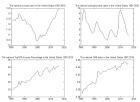
Figure 1
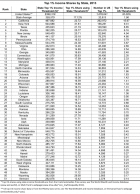
Figure 2
Similar Articles
-
Economic disparities and suicides: The dynamic panel data analyses of 50 states in the United StatesBruce Q Swan*. Economic disparities and suicides: The dynamic panel data analyses of 50 states in the United States. . 2021 doi: 10.29328/journal.jfsr.1001023; 5: 020-029
-
Victim of violent death: what is the role of alcoholemia?Ivan Dieb Miziara*,Carmen Silvia Molleis Galego Miziara. Victim of violent death: what is the role of alcoholemia?. . 2021 doi: 10.29328/journal.jfsr.1001027; 5: 048-052
-
Development of qualitative GC MS method for simultaneous identification of PM-CCM a modified illicit drugs preparation and its modern-day application in drug-facilitated crimesBhagat Singh*,Satish R Nailkar,Chetansen A Bhadkambekar,Suneel Prajapati,Sukhminder Kaur. Development of qualitative GC MS method for simultaneous identification of PM-CCM a modified illicit drugs preparation and its modern-day application in drug-facilitated crimes. . 2023 doi: 10.29328/journal.jfsr.1001043; 7: 004-010
Recently Viewed
-
Metastatic Brain Melanoma: A Rare Case with Review of LiteratureNeha Singh,Gaurav Raj,Akshay Kumar,Deepak Kumar Singh,Shivansh Dixit,Kaustubh Gupta*. Metastatic Brain Melanoma: A Rare Case with Review of Literature. J Radiol Oncol. 2025: doi: 10.29328/journal.jro.1001080; 9: 050-053
-
Validation of Prognostic Scores for Attempted Vaginal Delivery in Scar UterusMouiman Soukaina*,Mourran Oumaima,Etber Amina,Zeraidi Najia,Slaoui Aziz,Baydada Aziz. Validation of Prognostic Scores for Attempted Vaginal Delivery in Scar Uterus. Clin J Obstet Gynecol. 2025: doi: 10.29328/journal.cjog.1001185; 8: 023-029
-
Scientific Analysis of Eucharistic Miracles: Importance of a Standardization in EvaluationKelly Kearse*,Frank Ligaj. Scientific Analysis of Eucharistic Miracles: Importance of a Standardization in Evaluation. J Forensic Sci Res. 2024: doi: 10.29328/journal.jfsr.1001068; 8: 078-088
-
A study of coagulation profile in patients with cancer in a tertiary care hospitalGaurav Khichariya,Manjula K*,Subhashish Das,Kalyani R. A study of coagulation profile in patients with cancer in a tertiary care hospital. J Hematol Clin Res. 2021: doi: 10.29328/journal.jhcr.1001015; 5: 001-003
-
Additional Gold Recovery from Tailing Waste By Ion Exchange ResinsAshrapov UT*, Malikov Sh R, Erdanov MN, Mirzaev BB. Additional Gold Recovery from Tailing Waste By Ion Exchange Resins. Int J Phys Res Appl. 2024: doi: 10.29328/journal.ijpra.1001098; 7: 132-138
Most Viewed
-
Evaluation of Biostimulants Based on Recovered Protein Hydrolysates from Animal By-products as Plant Growth EnhancersH Pérez-Aguilar*, M Lacruz-Asaro, F Arán-Ais. Evaluation of Biostimulants Based on Recovered Protein Hydrolysates from Animal By-products as Plant Growth Enhancers. J Plant Sci Phytopathol. 2023 doi: 10.29328/journal.jpsp.1001104; 7: 042-047
-
Sinonasal Myxoma Extending into the Orbit in a 4-Year Old: A Case PresentationJulian A Purrinos*, Ramzi Younis. Sinonasal Myxoma Extending into the Orbit in a 4-Year Old: A Case Presentation. Arch Case Rep. 2024 doi: 10.29328/journal.acr.1001099; 8: 075-077
-
Feasibility study of magnetic sensing for detecting single-neuron action potentialsDenis Tonini,Kai Wu,Renata Saha,Jian-Ping Wang*. Feasibility study of magnetic sensing for detecting single-neuron action potentials. Ann Biomed Sci Eng. 2022 doi: 10.29328/journal.abse.1001018; 6: 019-029
-
Pediatric Dysgerminoma: Unveiling a Rare Ovarian TumorFaten Limaiem*, Khalil Saffar, Ahmed Halouani. Pediatric Dysgerminoma: Unveiling a Rare Ovarian Tumor. Arch Case Rep. 2024 doi: 10.29328/journal.acr.1001087; 8: 010-013
-
Physical activity can change the physiological and psychological circumstances during COVID-19 pandemic: A narrative reviewKhashayar Maroufi*. Physical activity can change the physiological and psychological circumstances during COVID-19 pandemic: A narrative review. J Sports Med Ther. 2021 doi: 10.29328/journal.jsmt.1001051; 6: 001-007

HSPI: We're glad you're here. Please click "create a new Query" if you are a new visitor to our website and need further information from us.
If you are already a member of our network and need to keep track of any developments regarding a question you have already submitted, click "take me to my Query."







